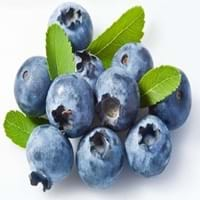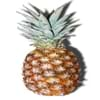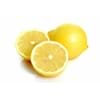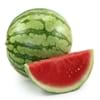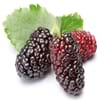Health Benefits
Asthma treatment, Bronchitis treatment, Cancer prevention, Heart care, Increases metabolic rate
Cancer prevention, Cures gastro-intestinal troubles, Improves night vision, Improves stomach health, Prevents diabetes, Prevents high blood pressure, Reduces blood circulation problems
General Benefits
Anti-inflammatory properties, Controls blood pressure, Digestive aid, Eye care, Healing of wounds, Maintains healthy cholesterol level, Strengthens bones, Treatment of sinusitis, Treatment of common cold
Fights against infections, Helps in weight loss, Prevents blood clotting in vessels, Treatment of urinary tract infections
Skin Benefits
Anti-aging benefits, Brightens and lightens complexion, Skin cleansing, Treatment of acne, Treatment of dark spots
Anti-aging benefits, Nourishes skin, Protects against skin damage
Hair Benefits
Prevents hair loss
Prevents hair loss
Allergy Symptoms
Abdominal pains, Itching in tongue and other parts of mouth, Sneezing, Swelling, Tingling sensation in wrist and face, Vomiting, Wheezing
Not Available
Side Effects
Causes swollen mouth, Allergic reaction, Diarrhoea, Nausea, Skin rash, Vomiting
Decrease in blood sugar levels, Diarrhoea, Dizziness, Headache, Internal bleeding, Stomach pain
Best Time to Eat
Best if taken as a breakfast (or empty stomach), As a snack in the late afternoon, Eat the fresh ones, avoid mixing with any other foods, don't eat after meal., Morning time (before lunch)
As a snack in the late afternoon, Don't consume at night and before bed, Eat the fresh ones, avoid mixing with any other foods, don't eat after meal., Morning time (before lunch)
Vitamin B5 (Pantothenic Acid)
Vitamin C (Ascorbic Acid)
Vitamin K (Phyllochinone)
Phytosterol
Not Available
Calories in Fresh Fruit with Peel
Not Available
Calories in Fresh Fruit without Peel
Not Available
Calories in Frozen Form
Not Available
Calories in Dried Form
Not Available
Calories in Canned Form
Not Available
Type
Berry, Tropical
Berry
Varieties
Smooth Cayenne, Abacaxi, Red Spanish and Queen
Dwarf bilberry, Piper, bog blueberry, Northern bilberry, Mountain bilberry and Oval-leaved bilberry
Inside Color
Yellow
Light Green
Taste
Strong, Sweet, Tart
Sweet
Origin
Central America, South America
Unknown
Grows on
Not Available
Trees
Soil Type
Clay, Sandy loam, Well-drained
Moist, Well-aerated
Climatic Conditions
Hot, Sunny
Cold
Facts about
- A single pineapple takes 3 years to reach maturation.
- Pineapple is not an apple, but is actually a berry.
- The name is with reference to its resemblance to pine cones.
- Pineapple is sweeter if scales are more.
- Bilberries are used in manufacturing of alcoholic drinks.
- They are used to improve aromas of sorbets.
- The green extract of it's leaves is used in textile industry as natural dye.
Top Producer
Costa Rica
Japan
Other Countries
Brazil, India, Philippines, Thailand
Denmark, Finland, Iceland, Sweden
Top Importer
United States of America
United States of America
Top Exporter
Costa Rica
Chile
Botanical Name
Ananas comosus
Vaccinium myrtillus
Synonym
Ananas sativus
blaeberry, whinberry, European blueberry, whortleberry
Subkingdom
Tracheobionta
Tracheobionta
Division
Magnoliophyta
Magnoliophyta
Class
Liliopsida
Magnoliopsida
Subclass
Commelinidae
Dillenhidae
Family
Bromeliaceae
Ericaceae
Species
A. comosus
Vaccinium myrtillus
Generic Group
Pineapple
Heath
Difference Between Pineapple and Bilberry
We might think that Pineapple and Bilberry are similar with respect to nutritional value and health benefits. But the nutrient content of both fruits is different. Pineapple and Bilberry Facts such as their taste, shape, color, and size are also distinct. The difference between Pineapple and Bilberry is explained here.
The amount of calories in 100 gm of fresh Pineapple and Bilberry with peel is Not Available and 44.00 kcal and the amount of calories without peel is 50.00 kcal and Not Available respectively. Thus, Pineapple and Bilberry belong to Low Calorie Fruits and Low Calorie Fruits category.These fruits might or might not differ with respect to their scientific classification. The order of Pineapple and Bilberry is Poales and Ericales respectively. Pineapple belongs to Bromeliaceae family and Bilberry belongs to Ericaceae family. Pineapple belongs to Ananas genus of A. comosus species and Bilberry belongs to Vaccinium genus of Vaccinium myrtillus species. Beings plants, both fruits belong to Plantae Kingdom.

